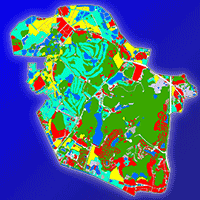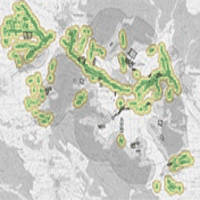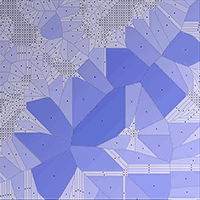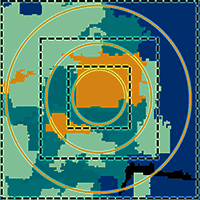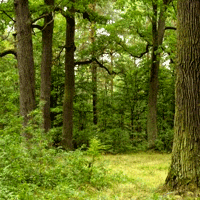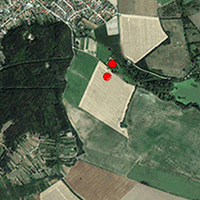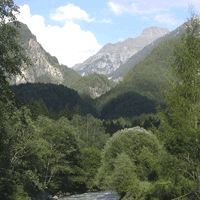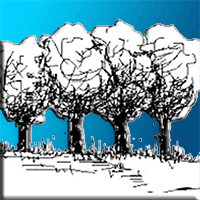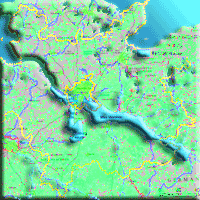
How do urban dwellers react to potential landscape changes in recreation areas? A case study with particular focus on the introduction of dendromass in the Hamburg Metropolitan Region
Thiemen Boll , Christina von Haaren, Christian Albert
iForest - Biogeosciences and Forestry, Volume 7, Issue 6, Pages 423-433 (2014)
doi: https://doi.org/10.3832/ifor1173-007
Published: May 19, 2014 - Copyright © 2014 SISEF
Research Articles
Collection/Special Issue: RegioResources21
Spatial information and participation of socio-ecological systems: experiences, tools and lessons learned for land-use planning
Guest Editors: Daniele La Rosa, Carsten Lorz, Hannes Jochen König, Christine Fürst
Abstract
Recently, many German regions have seen dramatic landscape changes in agricultural areas due to increasing cultivation of bioenergy crops. Especially in regions that are economically dependent on income from recreational use, this development faces opposition by tourist stakeholders, local inhabitants and recreationists. In the future tall bioenergy plants like maize could be replaced by even taller short rotation coppice plantations of willow and poplar. This development raises the question of how people perceive landscape changes and if perceptions are influenced by the landscape where they take place. We surveyed urban residents in the city of Hamburg (n= 400) to see how they perceive potential landscape changes in four recreation areas with different landscape structures in the vicinity of Hamburg (Lüneburg Heath, Harburg Hills, Elbe Marshes and Altes Land). The survey showed that people rated changes significantly different, depending on the specific landscape type of the recreation areas. The survey did not show a clear general preference for reducing or increasing forests. However, the landscape character of each recreation area had a strong influence on the acceptance of landscape changes by planting forests, hedges, and shrubs. People showed a significantly higher negative reaction towards more forests in open landscapes characterized by heath and meadows than in landscapes with a higher share of forests and fields. Interestingly, the introduction of hedges and shrubs was evaluated differently from the introduction of forests depending on the type of open landscape. People preferred the introduction of hedges and shrubs in the landscape rich in meadows and pastures while they rejected the introduction of hedges and shrubs in a historic cultural landscape rich in heathland. In view of these results we recommend that the landscape character and the cultivation system are considered in the assessment and determination of potential short rotation coppice production sites. This may considerably increase the acceptability of dendromass cultivation for energy purposes.
Keywords
Landscape Changes, Recreation, Landscape Character, Visual Landscape, Dendromass, Short Rotation Coppice, Agriculture, Forestry
Authors’ Info
Authors’ address
Christina von Haaren
Christian Albert
Institute of Environmental Planning, Leibniz University Hannover, Herrenhäuser Str. 2, D-30419 Hannover (Germany)
Corresponding author
Paper Info
Citation
Boll T, von Haaren C, Albert C (2014). How do urban dwellers react to potential landscape changes in recreation areas? A case study with particular focus on the introduction of dendromass in the Hamburg Metropolitan Region. iForest 7: 423-433. - doi: 10.3832/ifor1173-007
Academic Editor
Marco Borghetti
Paper history
Received: Oct 31, 2013
Accepted: Mar 19, 2014
First online: May 19, 2014
Publication Date: Dec 01, 2014
Publication Time: 2.03 months
Copyright Information
© SISEF - The Italian Society of Silviculture and Forest Ecology 2014
Open Access
This article is distributed under the terms of the Creative Commons Attribution-Non Commercial 4.0 International (https://creativecommons.org/licenses/by-nc/4.0/), which permits unrestricted use, distribution, and reproduction in any medium, provided you give appropriate credit to the original author(s) and the source, provide a link to the Creative Commons license, and indicate if changes were made.
Web Metrics
Breakdown by View Type
Article Usage
Total Article Views: 59038
(from publication date up to now)
Breakdown by View Type
HTML Page Views: 48899
Abstract Page Views: 4173
PDF Downloads: 4215
Citation/Reference Downloads: 69
XML Downloads: 1682
Web Metrics
Days since publication: 4244
Overall contacts: 59038
Avg. contacts per week: 97.38
Citation Metrics
Article Citations
Article citations are based on data periodically collected from the Clarivate Web of Science web site
(last update: Mar 2025)
Total number of cites (since 2014): 11
Average cites per year: 0.92
Publication Metrics
by Dimensions ©
Articles citing this article
List of the papers citing this article based on CrossRef Cited-by.
References
AGROWOOD. Kurzumtriebsplantagen in Deutschland und Europäische perspektiven [AGROWOOD. Short rotation coppice in Germany and European perspectives]. Weißensee-Verlag (Ökologie), Berlin, Germany, pp. 342. [in German]
Gscholar
Historische Kulturlandschaft und Kulturlandschaftselemente Teil I. Bundesübersicht. Teil II: Leitfaden [Historical cultural landscapes and cultural landscape elements]. Angewandte Landschaftsökologie 20, Bonn-Bad Godesberg, Germany, pp. 320. [in German]
Gscholar
Growing regions, growing Europe. Fourth report on economic and social cohesion, Office for Official Publications, European Communities, Luxembourg, pp. 200.
Gscholar
Thema: Landschaftsbild. Landschaft lesen. Impulse zur Landschaftsästhetik, Naturwahrnehmung und Landschaftsbildbewertung für die norddeutsche Kulturlandschaft [Topic: Visual Landscape. Reading Landscape. Impulses for landscape aesthetics, perception of nature and landscape character assessment for the northern German cultural landscape]. Oceano, Schwerin, Germany, pp. 94. [in German]
Online | Gscholar
Erfassung und Bewertung des Landschaftsbildes. Grundlagen und Methoden zur Bearbeitung des Schutzguts “Vielfalt, Eigenart und Schönheit von Natur und Landschaft“ in der Planung [Assessment of the visual landscape. Basics and methods to handle “diversity, peculiarity and beauty of nature and landscape” in planning practice.]. Informationsdienst Naturschutz Niedersachsen 20 (1): 1-60. [in German]
Gscholar
Landschaft in der Postmoderne. Das Beispiel des Saarlandes [Postmodern Landscape. The example of the Saarland]. Deutscher Universitätsverlag, Wiesbaden, Germany, pp. 348. [in German]
Gscholar
Die Entwicklung der Agrarlandschaften in Südbayern und ihre Beurteilung durch die Bevölkerung [The development of the agricultural areas in southern Bavaria and their appreciation by the public]. Franziska Land Verlag, Berlin, Germany, pp. 304. [in German]
Gscholar
Langfristszenarien und Strategien für den Ausbau der erneuerbaren Energien in Deutschland bei Berücksichtigung der Entwicklung in Europa und global. Leitstudie 2010 [Long-term scenarios and strategies for the expansion of renewable energies in Germany]. DLR, Fraunhofer IWES, IFNE, pp. 201. [in German]
Gscholar
European rural landscapes. Persistence and change in a globalising environment. Springer, Dordrecht, The Netherlands, pp. 482.
Gscholar
Lüneburger Heide, Wendland und Nationalpark Mittleres Elbtal [Lüneburg Heath, Wendland and national park Mittleres Elbtal]. Ulmer, Stuttgart, Germany, pp. 256. [in German]
Gscholar
Aesthetische Bewertung landwirtschaftlicher Kulturen durch die Bevölkerung [Aesthetic assessment of agricultural crops by the public]. ART-Schriftenreihe 10, Zurich, Switzerland, pp. 122. [in German]
Gscholar
Kurzumtriebsplantagen aus ökologischer und ökonomischer Sicht [Short rotation coppice from an ecological and economic perspective]. Arbeitsberichte aus der vTI-Agrarökonomie, 2012.6, Braunschweig, Germany, pp. 86. [in German]
Gscholar
Identifizierung strategischer Hemmnisse und Entwicklung von Lösungsansätzen zur Reduzierung der Nutzungskonkurrenz beim weiteren Ausbau der Biomassenutzung [Identification of strategic barriers and development of possible approaches to reduce competing uses in the bioenergy sector]. DBFZ Report Nr. 4 (4), Leipzig, Germany, pp. 193. [in German]
Gscholar
Abschlussbericht Verbundvorhaben: Energiepflanzen für die Biogasproduktion [Final report: Energy crops for biogas production]. Agricultural Institute of the State of Thüringen, Jena, Germany, pp. 72. [in German]
Gscholar
Space and place. The perspective of experience. University of Minnesota Press, Minneapolis, MN, USA, pp. 496.
Gscholar

